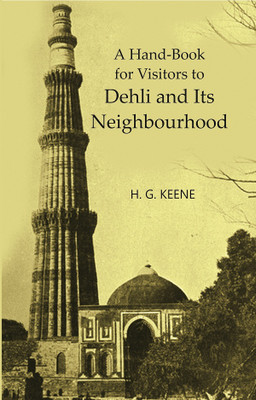A Handbook for Visitors to Dehli and Its Neighbourhood(Paperback, H.G. Keene)
Quick Overview
Product Price Comparison
About The Book : The station of Dehli is reached by a short siding of the East India Railway from the terminus at Ghazjabad Junction, 'Which, crossing the Jamna by a fine girder-bridge, and passing through the old Fort of Salimgarh and a corner of ShahjahanV Red Castle," or Ldl Killd, lands the traveller in the neighbourhood of the Queen's Gardens. He will find several Hotels advertised, but the personnel, and therefore the administration, of Indian Hotels is always changing. There is also a. Government Ddk Bangdlow, which is well kept, and centrally situated. At all these houses there is likely to be a guide acquainted, more or less, with the English language ; but it is hoped that readers of this work will have but little occasion for their services. Dehli, the Rome of Asia, consists, besides the modern city, of ruins spreading over a length of ten miles by a breadth averaging little less than six. In this area are comprised the traditional " seven castles and fifty-two gates" spoken of as far back as 1611 by the merchant Finch. To the North is the new city of Sbahjahan, which was not built in Finch's time. In order to form any idea of the contents of so thickly-covered a space as this is, some method must be adopted If only two days can be spared, the best plan will probably be to give the first to the modern city, and the second to a drive to the Kutab aud return by Humayun's tomb and Ferozabad. About The Author : H. G. KEENE (1826 ŌĆō 1915) was an English historian of medieval and modern India. Keene was born at the East India College, Haileybury. Henry George Keene (1781ŌĆō1864) was his father. He was educated at Rugby School and Wadham College, Oxford, going to India as an East India Company employee in 1847. His career as an official was limited, but he began to write. From 1847 to 1882 Keene served in the Bengal Civil Service. During the Indian Rebellion of 1857 he was Superintendent at Dehra Doon. In his subsequent service Keene was in frequent disagreement with his superiors, and when he reached the 35 years' limit he had not got beyond the grade of a district and sessions Judge. He retired with the decoration of CIE, and with a literary reputation. Keene died on 26 March 1915 at his residence in Westward Ho! "Keene's Handbooks" covered a number of Indian cities. He also wrote for the Dictionary of National Biography and Chambers's Encyclopaedia.


